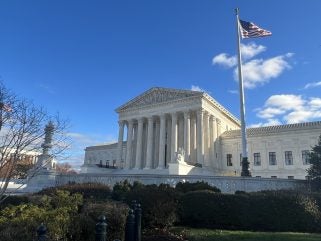
Following a raft of emergency applications from industry groups and Republican-leaning states to block new Environmental Protection Agency anti-pollution rules, the US Supreme Court on 4 October left in place two Biden administration regulations aimed at reducing industry emissions of planet-warming methane and toxic mercury.
The justices did not detail their reasoning in the orders, but they have come while the High Court is still considering challenges to a third Environmental Protection Agency rule aimed at curbing pollution from coal-fired power plants.
The regulations are part of a broader effort by the Biden administration aimed at curbing climate change. They include financial incentives to buy electric vehicles and upgrade infrastructure, and rules tightening exhaust pollution standards for cars and trucks.
The industry groups and states had argued the EPA overstepped its authority and set unattainable standards with the new regulations. The new standards they said, would be ‘impossible to meet’ and amounted to an attack on the industry.
The EPA argued that the rules are squarely within its legal responsibilities and would protect the public. It believes the rule tightening methane emissions from oil and gas drilling will deliver major climate and health benefits, while the mercury rule will limit hazardous pollution from coal-fired power plants.
The methane rule will build on innovative technologies and solutions that many oil- and gas-producing states and companies are already using or have committed to use, while the mercury and air toxics rules are expected to ensure that the nation’s coal-fired power plants meet up-to-date standards for hazardous air pollutants, said the EPA.
The Supreme Court has shot down other environmental regulations in recent years, including a landmark decision that limited the EPA’s authority to regulate carbon dioxide emissions from power plants in 2022, and another that halted the agency’s air-pollution-fighting “good neighbour” rule.
The methane rule puts new requirements on the oil and gas industry, which is the largest emitter of the gas. Moreover, sharp cuts in methane emissions are a global priority to slow the rate of climate change. The methane rule targets emissions from existing oil and gas wells nationwide, rather than focusing only on new wells. It also regulates smaller wells that will be required to find and contain methane leaks.
The mercury rule came after a reversal of a move by the Trump administration. It updates regulations that were more than a decade old for emissions of mercury and other harmful pollutants that can affect the nervous system, kidneys and foetal development. Industry groups and conservative-leaning states argued emissions were already low enough, and the new standards could force the shutting down of coal-fired power plants.






